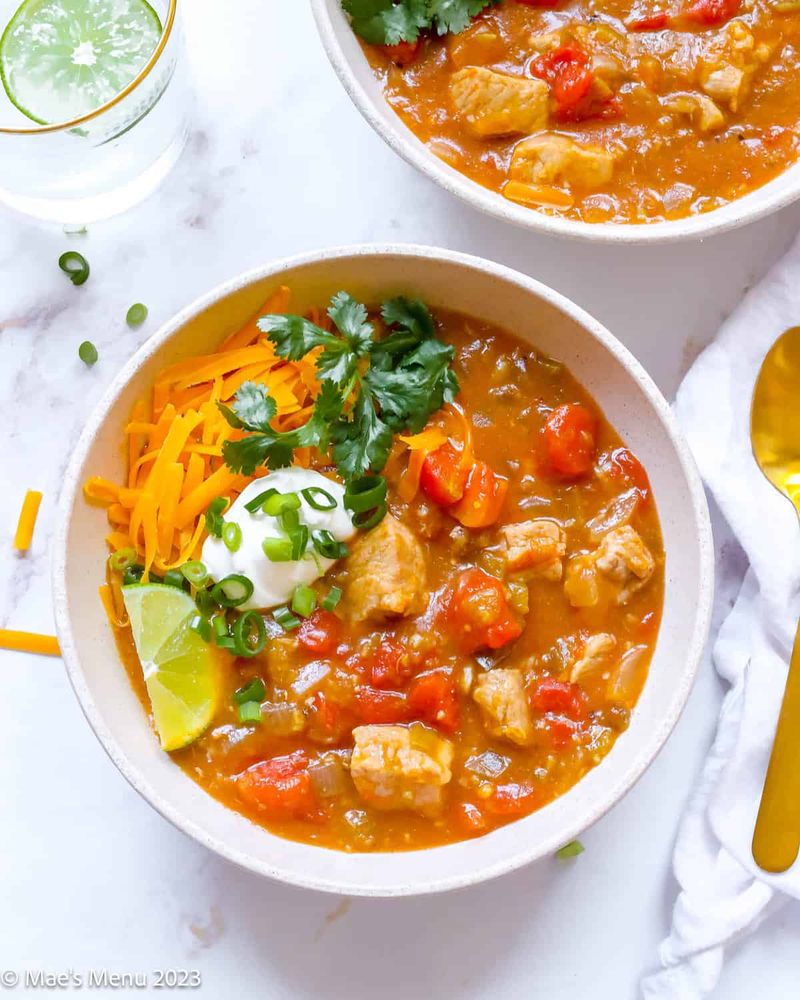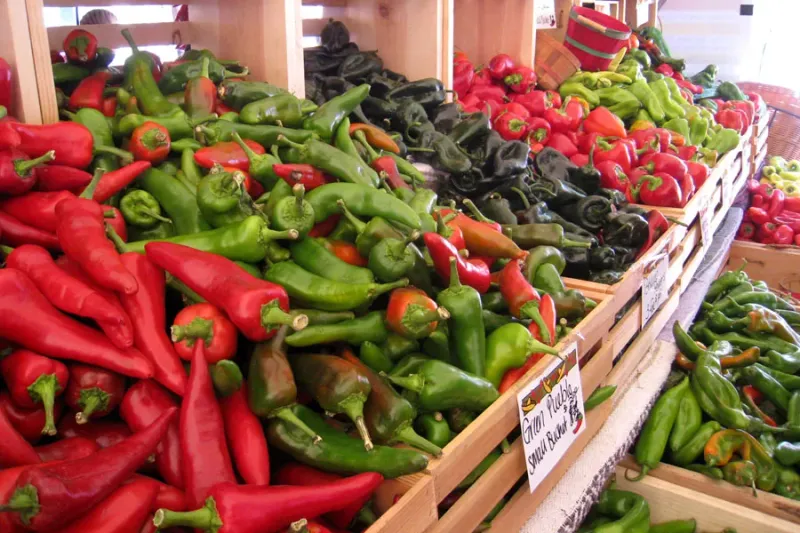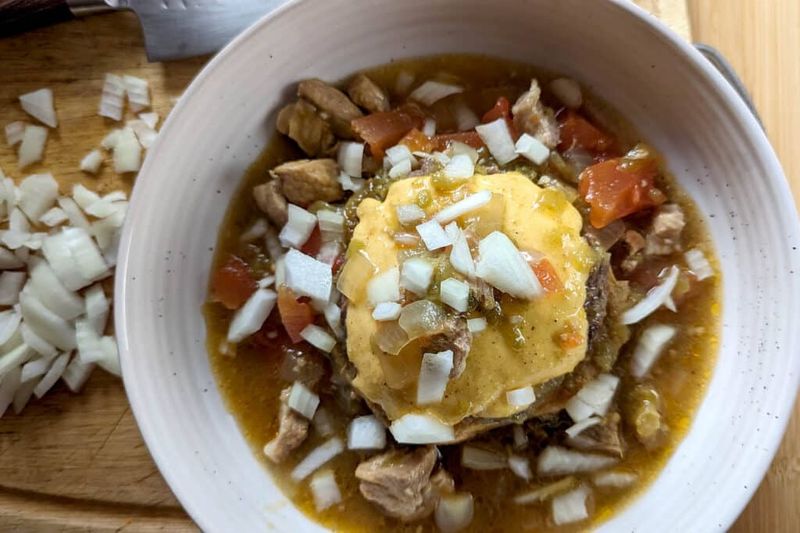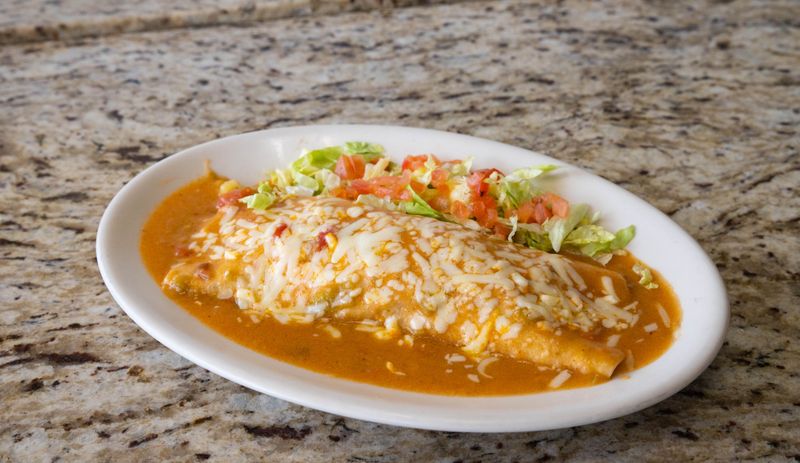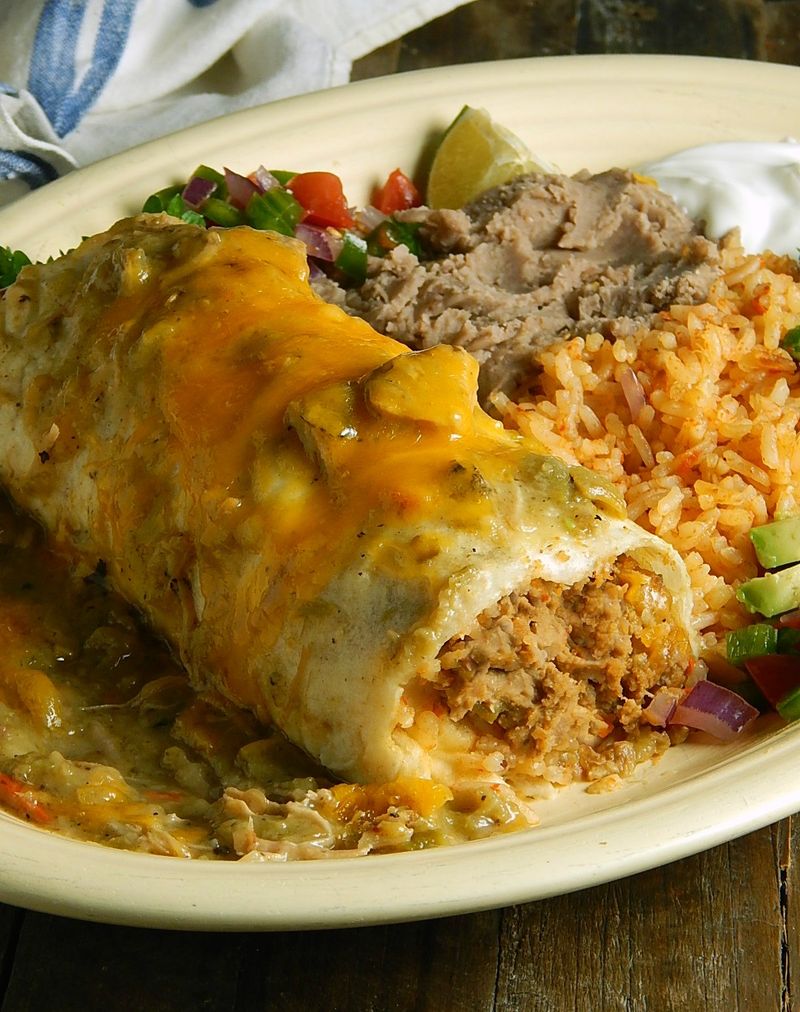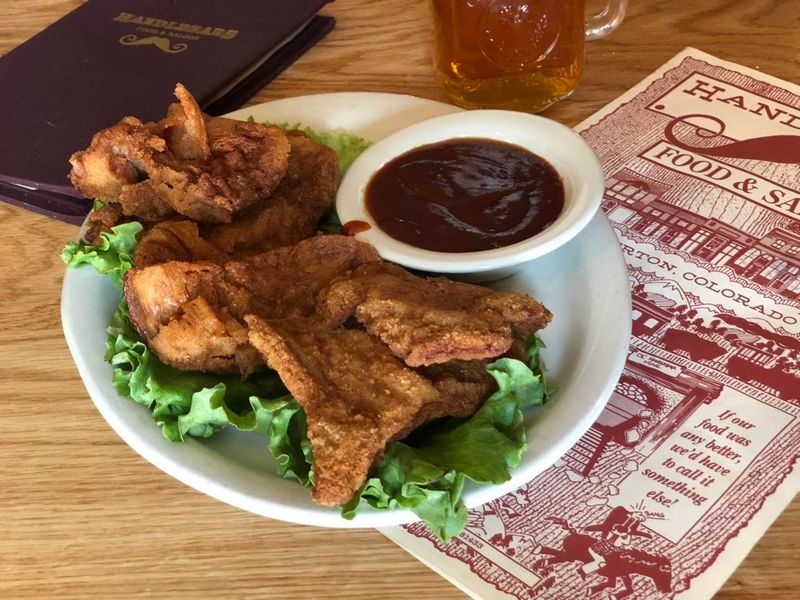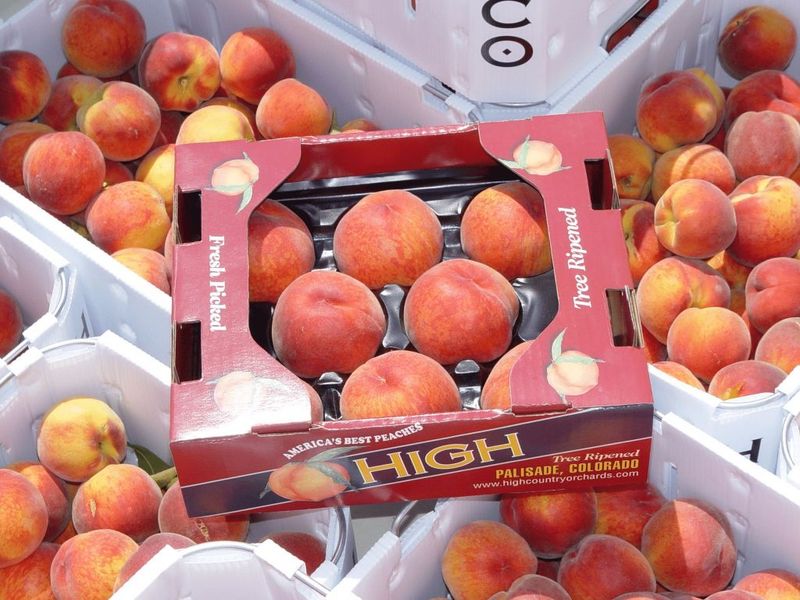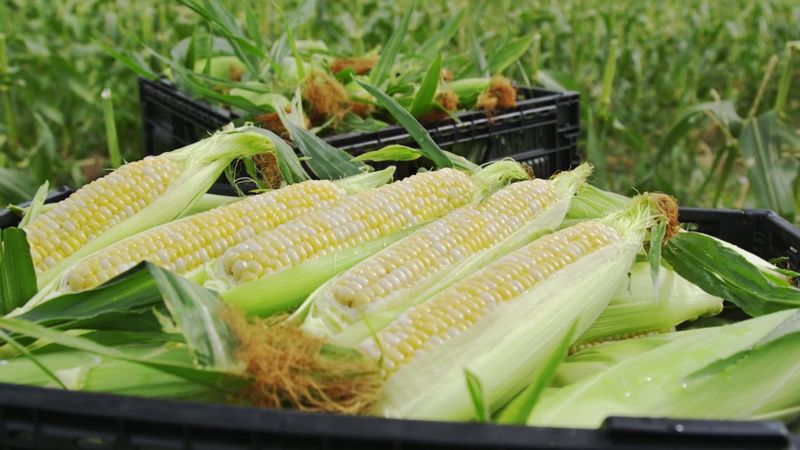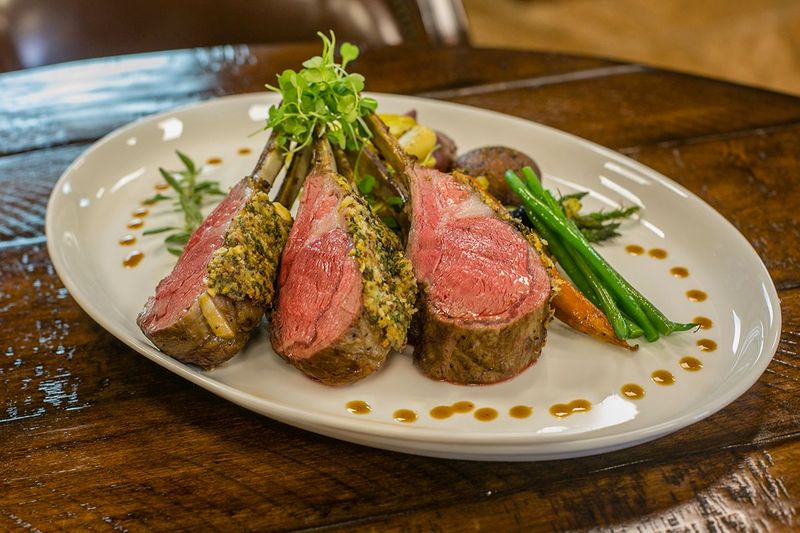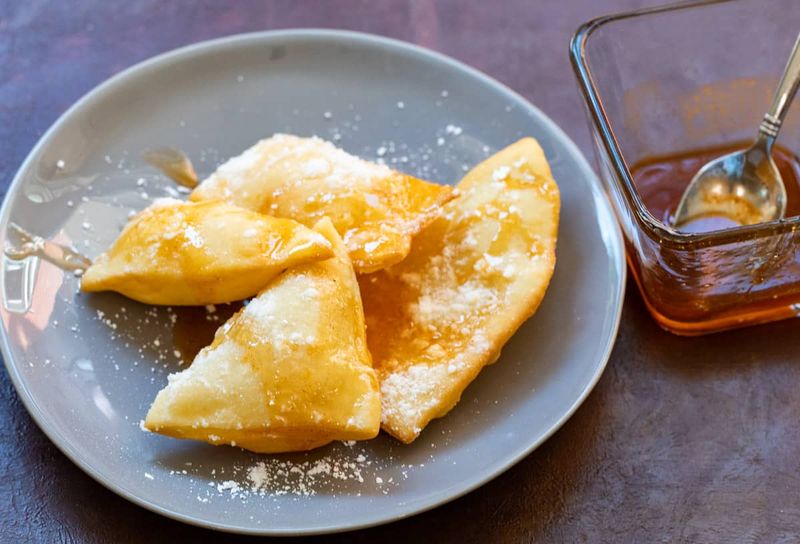When it comes to food, Colorado has a unique flavor profile that often flies under the national radar. From spicy chile-smothered dishes to sweet summer harvests, the Centennial State’s cuisine reflects its diverse geography and cultural influences. These 12 foods represent the true taste of Colorado – beloved staples that locals defend with fierce pride and visitors rarely understand until they’ve experienced them firsthand.
1. Colorado Green Chile (aka chile verde)
Mention green chile to a Colorado native and watch their eyes light up. Unlike New Mexico’s thinner sauce, our version is hearty enough to eat with a spoon – a thick, porky stew loaded with roasted chiles that packs serious heat and depth.
Denver diners debate which restaurant serves the best version, but they all agree: proper Colorado green chile should be thick enough to leave a spoon standing upright. The magical concoction transforms ordinary breakfast burritos and hamburgers into comfort food masterpieces.
During late summer, the aroma of roasting chiles fills parking lots across the Front Range as locals stock their freezers for year-round enjoyment.
2. Pueblo Chiles (and the Colorado–New Mexico rivalry)
The chile wars between Colorado and New Mexico get heated every harvest season. Our prized Pueblo chiles develop their distinctive character from the Arkansas River Valley’s dramatic temperature swings – hot days followed by cool nights create the perfect growing conditions.
These thick-walled peppers deliver a slow-building, memorable heat that lingers pleasantly rather than overwhelming your palate. The annual Chile & Frijoles Festival transforms downtown Pueblo into a smoky celebration each September.
Farmers will tell you their superior flavor comes from Colorado’s mineral-rich soil and pure Rocky Mountain water. Just don’t mention Hatch chiles unless you’re ready for a passionate defense of Pueblo’s superior peppers!
3. The Pueblo “Slopper”
Forget fancy plating – the Slopper celebrates delicious messiness. This Pueblo invention starts with an open-faced hamburger on a plate, then gets completely submerged in a lake of fiery green chile until you need a spoon to eat it.
Gray’s Coors Tavern claims to have created it in the 1950s when a regular customer requested his burger be “slopped” with chile. The cheese melts into the spicy bath while the bun soaks up the savory goodness. Some versions add fries underneath for extra soaking potential.
True Slopper aficionados judge a good one by how quickly you need extra napkins and whether you can still see any part of the burger beneath the chile.
4. Smothered Breakfast Burritos (the Den-Mex way)
Early morning construction sites and office break rooms across Denver share one common sight: foil-wrapped breakfast burritos. But locals know the real magic happens when that same burrito gets unwrapped and smothered with green chile in a sit-down joint.
The Den-Mex creation combines fluffy eggs, crispy potatoes, melted cheese and breakfast meat inside a flour tortilla. What makes it uniquely Colorado is the generous ladling of green chile sauce over top, transforming it from hand-held to fork-required.
Santiago’s alone sells over 3,000 breakfast burritos daily across their Colorado locations – proof of our collective morning addiction to this spicy wake-up call.
5. Denver’s Mexican Hamburger
Only in Denver will you find this peculiar fusion that locals adore and visitors struggle to comprehend. The Mexican Hamburger isn’t served on a bun – it’s a beef patty and refried beans wrapped inside a flour tortilla, then smothered with green chile sauce and melted cheese.
This quirky creation reportedly originated at Joe’s Buffet on Santa Fe Drive in the 1960s. The genius combination delivers all the satisfaction of a burger while incorporating the flavors of a burrito in one glorious, messy package.
Longtime Denver establishments like Chubby’s and The Original Chubby’s serve authentic versions that haven’t changed in decades – exactly how locals want it.
6. Colorado-Style Pizza (“Mountain Pies”)
Colorado’s contribution to pizza culture weighs in at a hefty pound or more per pie. These mountain-sized creations feature braided, hand-rolled edges that stand tall like the Rockies themselves – creating what locals affectionately call “the bones.”
The signature move? Drizzling honey on those thick, doughy edges after you’ve devoured the toppings. Beau Jo’s in Idaho Springs pioneered this style in 1973, and mountain towns across the state have embraced the honey-sweetened crust tradition.
These substantial pies are sold by weight rather than diameter, with names like “1-pounder” or “3-pounder” – perfect fuel after a day of skiing or hiking Colorado’s peaks. The honey jar on every table is non-negotiable.
7. Rocky Mountain Oysters (Severance staple)
Colorado’s most infamous delicacy isn’t seafood at all. These “oysters” are actually bull testicles, sliced, breaded, deep-fried, and served with cocktail sauce – a testament to ranching culture’s waste-not philosophy.
Bruce’s Bar in the tiny town of Severance turned this novelty food into their claim to fame, serving them since the 1950s. Locals enjoy watching tourists’ reactions upon learning what they’re eating. The Denver Buckhorn Exchange and Fort Lupton’s White Fence Farm also serve respectable versions.
Annual festivals celebrate this peculiar protein, including the Testy Festy in Severance. Most Coloradans have tried them at least once, usually on a dare – describing them as tasting like mild, gamey chicken nuggets.
8. Palisade Peaches (Western Slope royalty)
The first bite of a perfectly ripe Palisade peach is a Colorado summer ritual – juice running down your arm as you taste sunshine captured in fruit form. These legendary peaches develop their exceptional sweetness from hot days, cool nights, and mineral-rich water flowing from the mountains.
Western Slope orchards near Grand Junction produce these treasures from late July through September. Locals track the harvest obsessively, knowing the season is fleeting and the rewards immense.
Farm stands along I-70 see cars with Colorado plates making pilgrimages for fresh-picked boxes. The annual Palisade Peach Festival draws thousands who understand why these peaches make Georgia’s famous fruit seem ordinary by comparison.
9. Olathe Sweet Corn
Summer dinner tables across Colorado aren’t complete without steaming ears of Olathe Sweet Corn. The tiny town of Olathe (pronounced oh-LAY-thuh) produces corn so naturally sweet that locals insist on eating it plain – no butter or salt needed to enhance its perfection.
The Uncompahgre Valley’s unique growing conditions create the ideal environment for developing exceptional sugar content. Farmers rush harvested corn to markets within hours to preserve peak freshness.
Each August, the Olathe Sweet Corn Festival celebrates this humble crop that put a small farming community on the culinary map. True corn aficionados know to look for the official Olathe Sweet label at grocery stores and farmers markets to ensure they’re getting the genuine article.
10. Rocky Ford Melons (especially cantaloupe)
The small town of Rocky Ford transforms into melon headquarters each summer when its famous cantaloupes reach their aromatic peak. You can smell them before you see them – their sweet perfume filling farmers markets across the state.
These orange-fleshed treasures develop their intense sweetness from the Arkansas Valley’s sandy soil and abundant sunshine. Local farmers have been growing them since the late 1800s, protecting the Rocky Ford name as fiercely as French vintners guard champagne.
The annual Rocky Ford Watermelon Day festival dates back to 1878, making it one of Colorado’s oldest continuous celebrations. True melon connoisseurs know to look for the official Rocky Ford Growers Association sticker to ensure authenticity.
11. Colorado Lamb
Chefs nationwide covet Colorado lamb for its exceptional flavor and tenderness, but locals have always known our high-altitude, herb-rich pastures produce something special. Unlike the gamey taste that turns some people away from lamb, Colorado’s version offers a clean, sweet flavor profile.
Sheep ranching has deep roots here, with flocks grazing the Western Slope and mountain meadows for generations. The industry nearly collapsed in the 1970s before a resurgence led by chefs who recognized its superior quality.
Family-owned operations like Lusk Farms raise their lambs on natural forage without antibiotics or hormones. The American Lamb Board, headquartered in Denver, promotes domestic lamb against imported competition – but Coloradans needed no convincing of our homegrown superiority.
12. Sopapillas with Honey
The raised flag at Casa Bonita signaling fresh sopapillas might be Colorado’s most recognized dining cue. These puffy pillows of fried dough have become a beloved finish to any Mexican meal in the Centennial State, despite their New Mexican origins.
The ritual remains consistent: hot, hollow pastries arrive at your table alongside squeeze bottles of honey. Pierce the steam-filled pocket, drizzle honey inside, and enjoy the contrast of crispy exterior and soft, airy interior.
Generations of Colorado kids grew up celebrating birthdays at Casa Bonita primarily for these sweet treats. Though the entertainment might be the initial draw, locals know the sopapillas are the real star – the warm, honey-drizzled comfort food that completes any Front Range Mexican dining experience.

